This glossary was assembled using the EPA; Renovation, Repair, and Painting Program Final Rule (§ 745.82), issued April 2008 as well as a variety of other sources.
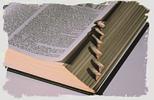 Renovators working under the EPA RRP Rule should become familiar with these terms and their meanings. If you haven't noticed already, the EPA has taken upon itself to create new and different definitions to many common terms already used in the renovation and remodeling industry. This can cause confusion when attempting to understand and interpret the EPA RRP Rule. Knowing these terms and the related "EPA RRP Definitions" for these terms can help avoid inaccurate assumptions and potential fines.
Renovators working under the EPA RRP Rule should become familiar with these terms and their meanings. If you haven't noticed already, the EPA has taken upon itself to create new and different definitions to many common terms already used in the renovation and remodeling industry. This can cause confusion when attempting to understand and interpret the EPA RRP Rule. Knowing these terms and the related "EPA RRP Definitions" for these terms can help avoid inaccurate assumptions and potential fines.
There are many other terms used in the EPA RRP rule than what have been included here. I will add more as time permits. Please feel free to contribute additional terms and definitions and or request any you feel should be added to this list.
Definition of Lead Based Paint
Lead-Based Paint (LBP) is a term used by Housing and Urban Development (HUD) and the EPA's Toxic Substances Control Act (TSCA) program. It defines paint with lead levels equal to or exceeding 1.0 milligram per square centimeter (1mg/cm2) or 0.5 percent by weight. Lead-based paint is not a term used by the Dangerous Waste program because the program only regulates lead if there is to leach 5.0 or more milligrams per liter on a TCLP Test - a different method of measurement. (Section 302(c) of the Lead-Based Paint Poisoning Prevention Act)
Abatements vs. Renovations
Abatement means an activity designed to permanently eliminate lead paint hazards. Abatement includes any of the following:
-The removal of lead paint and lead-contaminated dust; the permanent enclosure (barrier) or encapsulation (special paint coating) of lead paint; the replacement of lead-painted surfaces or fixtures; the removal or covering of lead-contaminated soil; and any preparation, cleanup, disposal, and post-abatement clearance testing associated with these activities.
-A project for which there is a contract indicating that a company will be performing work on a housing unit, day care center, preschool, or kindergarten that is designed to permanently remove lead paint hazards.
-A project resulting in the permanent removal of lead paint hazards, conducted by a certified abatement company.
-A project resulting in the permanent removal of lead paint hazards, conducted by a company who, through its name or promotional literature, represents, or advertises to be in the business of performing lead paint activities.
-A project resulting in the permanent removal of lead paint hazards that is conducted in response to a state or local government lead abatement order, as in the case of a lead poisoned child.
Abatements are generally performed in three circumstances:
– In response to a child with an elevated blood lead level
– In housing receiving HUD financial assistance
– State and local laws and regulations may require abatements in certain situations associated with rental housing.
Abatements are not covered by the RRP rule.
Renovations are performed for many reasons, most having nothing to do with lead-based paint. Renovations involve activities designed to update, maintain, or modify all or part of a building. Renovations are covered by the RRP rule.
Certified Firm
Certified Firm means a firm that has received EPA certification to perform renovations as covered by the Final Rule (745.82). Firms that perform renovations for compensation must apply to EPA for certification to perform renovations or dust sampling. To apply, a firm must submit to EPA a completed "Application for Firms,'' signed by an authorized agent of the firm, and pay a fee. To maintain its certification, a firm must be recertified by EPA every 5 years.
Certified Renovator
Renovator means an individual who either performs or directs workers who perform renovations. A certified renovator is a renovator who has successfully completed a renovator course accredited by EPA or an EPA-authorized State or Tribal program.
Child-Occupied Facility
Child-Occupied Facility means a building, or portion of a building, constructed prior to 1978, visited regularly by the same child, under 6 years of age, on at least two different days within any week (Sunday through Saturday period), provided that each day's visit lasts at least 3 hours and the combined weekly visits last at least 6 hours, and the combined annual visits last at least 60 hours.
Cleaning Verification Card
Cleaning verification card means a card developed and distributed, or otherwise approved, by EPA for the purpose of determining, through comparison of wet and dry disposable cleaning cloths with the card, whether post-renovation cleaning has been properly completed. (Anticipated to be distributed by EPA, Fall 2008.)
Lead; Renovation, Repair, and Painting Program (LRRPP) Rule
Lead; Renovation, Repair, and Painting Program (LRRPP) Rulemeans rules (40 CFR 745), which include Weatherization (see Renovation), established by the U.S. Environmental Protection Agency (April 2008) to address lead-based paint hazards created by renovation, repair, and painting activities that disturb lead-based paint in target housing and child-occupied facilities. (see definitions for target and child-occupied facilities
Firm
Firm means a company, partnership, corporation, sole proprietorship or individual doing business, association, or other business entity; a Federal, State, Tribal, or local government agency; or a nonprofit organization. In the case of Lead Safe Weatherization work, a firm can be the grantee, subgrantee, or contractor.
HEPA Vacuum
HEPA vacuum means a vacuum cleaner which has been designed with a high-efficiency particulate air (HEPA) filter as the last filtration stage. A HEPA filter is a filter that is capable of capturing particles of 0.3 microns with 99.97% efficiency. The vacuum cleaner must be designed so that all the air drawn into the machine is expelled through the HEPA filter with none of the air leaking past it
Lead Safe Weatherization (LSW)
Lead Safe Weatherization (LSW) means a set of protocols, established by the U.S. Department of Energy (WPN 02-6 issued July 23, 2002) to be used when disturbing surfaces that may have lead-based paint, that will reduce and control the amount of lead dust and paint chips that are generated. The protocols address compliance with applicable regulations, and are intended to reduce the risk of liability and health issues associated with the work.
Minor Repair and Maintenance (De minimis)
Minor repair and maintenance means activities, including minor heating, ventilation or air conditioning work, electrical work, and plumbing, that disrupt 6 square feet or less of painted surface per room for interior activities or 20 square feet or less of painted surface for exterior activities where none of the work practices prohibited or restricted by § 745.85(a)(3) are used and where the work does not involve window replacement or demolition of painted surface areas. When removing painted components, or portions of painted components, the entire surface area removed is the amount of painted surface disturbed. Jobs, other than emergency renovations, performed in the same room within the same 30 days must be considered the same job for the purpose of determining whether the job is a minor repair and maintenance activity.
Recognized Lead Test Kits
Recognized test kit means a commercially available kit recognized by EPA under the EPA LRRPP Rule as being capable of allowing a user to determine the presence of lead at levels equal to or in excess of 1.0 milligrams per square centimeter, or more than 0.5% lead by weight, in a paint chip, paint powder, or painted surface
Renovation
Renovation means the modification of any existing structure, or portion thereof, that results in the disturbance of painted surfaces, unless that activity is performed as part of an abatement as defined by this part (40 CFR 745.223). The term renovation includes (but is not limited to): The removal, modification or repair of painted surfaces or painted components (e.g., modification of painted doors, surface restoration, window repair, surface preparation activity (such as sanding, scraping, or other such activities that may generate paint dust)); the removal of building components (e.g., walls, ceilings, plumbing, windows); Weatherization projects (e.g., cutting holes in painted surfaces to install blown-in insulation or to gain access to attics, planning thresholds to install weather-stripping), and interim controls that disturb painted surfaces. A renovation performed for the purpose of converting a building, or part of a building, into target housing or a child-occupied facility is a renovation under this subpart. The term renovation does not include minor repair and maintenance activities. EPA added ‘‘Weatherization,'' to the definition to make it clear that all of these activities are covered by this definition if they disturb painted surfaces.
Target Housing
Target housing means housing constructed prior to 1978, except housing for the elderly or persons with disabilities (unless any one or more children age 6 years or under resides or is expected to reside in such housing for the elderly or persons with disabilities); or any 0-bedroom dwelling. (Any residential dwelling in which the living area is not separated from the sleeping area. The term includes efficiencies, studio apartments, dormitory housing, military barracks, and rentals of individual rooms in residential dwellings.)
Work Area
Work area means the area, of the work site, that the certified renovator establishes to contain the dust and debris generated by a renovation.
Work Site
Work site means physical property address/location where Lead Safe Weatherization work will be conducted.

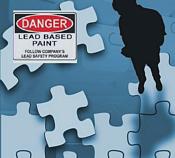 Looking for accurate information about the EPA RRP rule?
Looking for accurate information about the EPA RRP rule? 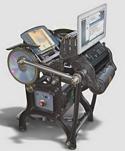
 On April 22, 2010. the EPA added an
On April 22, 2010. the EPA added an 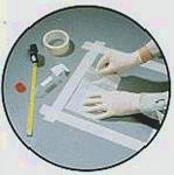 "This final rule requires that, if dust clearance is performed in lieu of cleaning verification, the renovation firm provide a copy of the dust wipe sampling report(s) to the owner of the building that was renovated as well as to the occupants, if different. With respect to renovations in common areas of target housing or in child-occupied facilities, EPA is also requiring that these records be made available to the tenants of the affected housing units or the parents and guardians of children under age 6 using the child-occupied facilities. Dust sampling reports may be made available to these groups in the same way as training and work practice records, by providing information on how to review or obtain copies in individual notifications or on posted signs."
"This final rule requires that, if dust clearance is performed in lieu of cleaning verification, the renovation firm provide a copy of the dust wipe sampling report(s) to the owner of the building that was renovated as well as to the occupants, if different. With respect to renovations in common areas of target housing or in child-occupied facilities, EPA is also requiring that these records be made available to the tenants of the affected housing units or the parents and guardians of children under age 6 using the child-occupied facilities. Dust sampling reports may be made available to these groups in the same way as training and work practice records, by providing information on how to review or obtain copies in individual notifications or on posted signs." The RRP Rule requires that firms be certified with the EPA before offering or performing work that falls under the rule. This fact is clearly stated in the rule and
The RRP Rule requires that firms be certified with the EPA before offering or performing work that falls under the rule. This fact is clearly stated in the rule and  work practices and training requirements.
work practices and training requirements. Note: If the home owner has removed all painted surfaces and or has already done all required demo, renovators should still be cautious. Just because all of the painted surfaces have been removed does not ensure that there is no lead dust still present in a work area. If the renovator spreads that dust while working, he or she could still be held liable for doing so. If demolition has been done by others prior to the start of work, it might be wise to have the area tested before you begin your work.
Note: If the home owner has removed all painted surfaces and or has already done all required demo, renovators should still be cautious. Just because all of the painted surfaces have been removed does not ensure that there is no lead dust still present in a work area. If the renovator spreads that dust while working, he or she could still be held liable for doing so. If demolition has been done by others prior to the start of work, it might be wise to have the area tested before you begin your work. According to the EPA web site:
According to the EPA web site: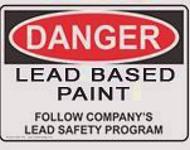 According to the Q&A area of the EPA's web site, before you can offer or do work on pre-1978 homes, you must be a Certified Firm (
According to the Q&A area of the EPA's web site, before you can offer or do work on pre-1978 homes, you must be a Certified Firm ( NOTE: Rhode Island is one of many states and or tribal authorities that has been granted and or is seeking authorization by the EPA to administer the RRP program. The opt-out provision is/will not be allowed in RI. If you know of the status of the opt-out in RI and or other states, please contribute that information along with a source/link to confirm accuracy.
NOTE: Rhode Island is one of many states and or tribal authorities that has been granted and or is seeking authorization by the EPA to administer the RRP program. The opt-out provision is/will not be allowed in RI. If you know of the status of the opt-out in RI and or other states, please contribute that information along with a source/link to confirm accuracy. 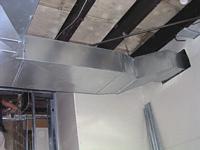 Firms performing tasks that disturb no painted surfaces whatsoever do not need to be EPA Certified Firms. However, since conditions at the job site may be difficult to predict, EPA strongly recommends that all firms involved in the renovation be certified and use properly trained and certified personnel. For example, a firm hired to install an HVAC system after demolition of painted surfaces has taken place may find that to complete the job painted surfaces need to be disturbed. The HVAC firm may not engage in activities that disturb painted surfaces if it is not certified.
Firms performing tasks that disturb no painted surfaces whatsoever do not need to be EPA Certified Firms. However, since conditions at the job site may be difficult to predict, EPA strongly recommends that all firms involved in the renovation be certified and use properly trained and certified personnel. For example, a firm hired to install an HVAC system after demolition of painted surfaces has taken place may find that to complete the job painted surfaces need to be disturbed. The HVAC firm may not engage in activities that disturb painted surfaces if it is not certified.  As every renovation job is different, it is up to the firm acting as the general contractor to determine what activities are within the scope of the renovation and to ensure that other firms are properly trained and certified for the tasks they will be performing. All firms, including the firm acting as the general contractor, are responsible for making sure the renovation is performed in accordance with the RRP work practice standards, including keeping containment intact and making sure lead dust and debris do not leave the work site. General contractors should keep in mind that if a firm hires a subcontractor that fails to follow the work practice standards or otherwise violates the Renovation, Repair, and Painting rule, the firm that hired the subcontractor is also responsible for the violation.
As every renovation job is different, it is up to the firm acting as the general contractor to determine what activities are within the scope of the renovation and to ensure that other firms are properly trained and certified for the tasks they will be performing. All firms, including the firm acting as the general contractor, are responsible for making sure the renovation is performed in accordance with the RRP work practice standards, including keeping containment intact and making sure lead dust and debris do not leave the work site. General contractors should keep in mind that if a firm hires a subcontractor that fails to follow the work practice standards or otherwise violates the Renovation, Repair, and Painting rule, the firm that hired the subcontractor is also responsible for the violation.
 sell the work, but the homeowner does not in any way have responsibility to only hire a certified firm. There is no consequence to the consumer for hiring someone who works illegally. If this is a challenge for you, it would be pointless to express your concerns to an EPA employee. They don't make the laws or rules. Rather, you should speak with your congressman. Congress was and is responsible for this rule, it's contents and the rule's lack of insight into the realities of implementation in the real world.
sell the work, but the homeowner does not in any way have responsibility to only hire a certified firm. There is no consequence to the consumer for hiring someone who works illegally. If this is a challenge for you, it would be pointless to express your concerns to an EPA employee. They don't make the laws or rules. Rather, you should speak with your congressman. Congress was and is responsible for this rule, it's contents and the rule's lack of insight into the realities of implementation in the real world.


